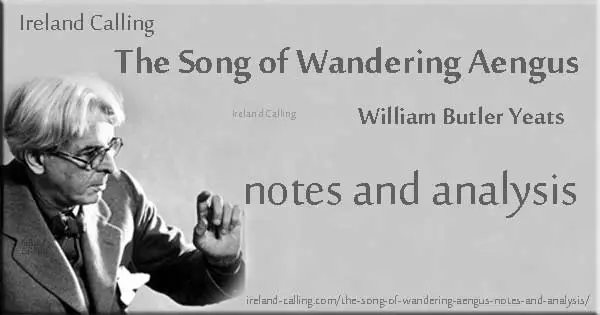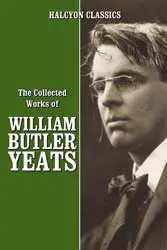The storyline of The Song of Wandering Aengus by W B Yeats involves myth and magic, but has a universal theme: the search for love and beauty.
The Song of Wandering Aengus
Videos
Ireland’s 100 favourite poems
W B Yeats
According to legend, Aengus was from the Tuatha De Dannan – the mythical people said to have conquered Ireland after defeating the native tribes of the Fir Bolg. He was considered a god of love, youth and beauty. There are numerous stories about Aengus, who is sometimes referred to as Aengus Og, which means Aengus the Young.
Yeats was a keen student of Irish folklore and would have known all of the myths surrounding Aengus. However, the poem doesn’t retell any of these myths – certainly not in any close or literal way.
It’s more likely that Yeats got a basic idea from the story of how Aengus fell in love with a girl he saw in a dream and then spent years searching for her.
Yeats takes this basic idea and creates his own story.

The Song of Wandering Aengus
I went out to the hazel wood,
Because a fire was in my head,
And cut and peeled a hazel wand,
And hooked a berry to a thread;
And when white moths were on the wing,
And moth-like stars were flickering out,
I dropped the berry in a stream
And caught a little silver trout.
When I had laid it on the floor
I went to blow the fire a-flame,
But something rustled on the floor,
And someone called me by my name:
It had become a glimmering girl
With apple blossom in her hair
Who called me by my name and ran
And faded through the brightening air.
Though I am old with wandering
Through hollow lands and hilly lands,
I will find out where she has gone,
And kiss her lips and take her hands;
And walk among long dappled grass,
And pluck till time and times are done
The silver apples of the moon,
The golden apples of the sun.

The Song of Wandering Aengus tells of a man going out to the woods to seek peace from the fire burning in his head – the fire of love and passion perhaps.
He makes a fishing rod out of a hazel branch, which is referred to as a wand, giving a clue as to the magic that is to follow.
Silver trout becomes a beautiful young woman
Aengus catches a silver trout which turns into a beautiful young woman who calls to him. The young woman disappears as soon as Aengus turns to her.
In the third verse, Aengus is now an old man yet he is still searching for her, and still hoping that he can be with her again.
The poem can be interpreted as being a dream sequence or as being a retelling of an old myth, but the most interesting point for many readers is the central theme: the lifelong search for the perfect love that people yearn for but which can seem so unattainable.
This was a theme Yeats knew only too well, having loved and unsuccessfully pursued the beautiful Maud Gonne for most of his life.
The Song of Wandering Aengus first appeared in Yeats’ collection of poems, The Wind Among the Reeds, published in 1899. It was voted Ireland’s fourth most popular poem by readers of the Irish Times.

